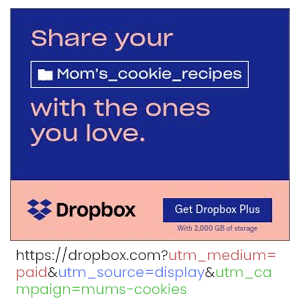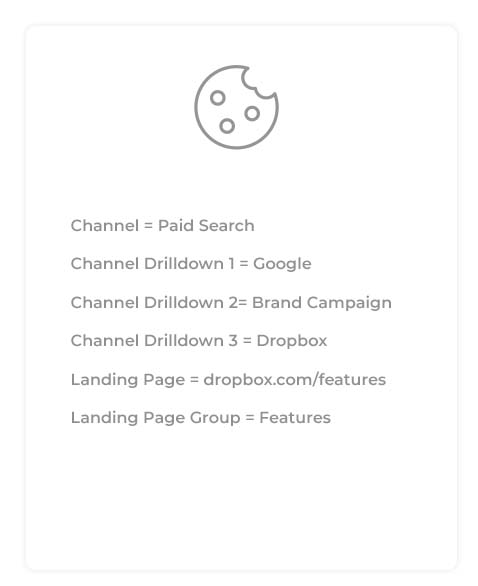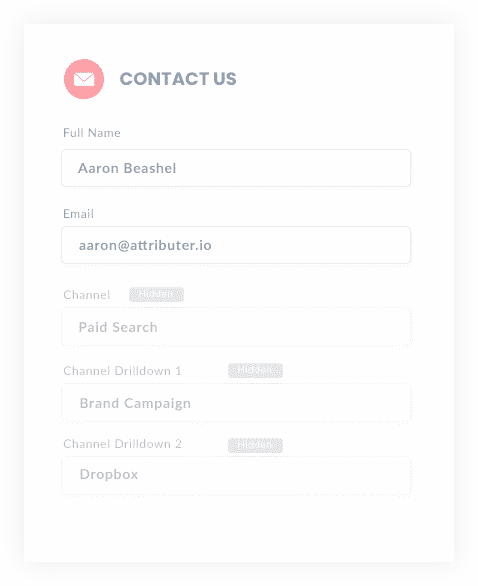The best way to get UTM parameters into Recurly
Learn how to send UTM parameters into Recurly so you know what marketing channels & campaigns are generating your trials, customers & recurring revenue

Do you wish you could analyse your subscription metrics (like MRR, ARR, Churn, etc.) based on the marketing channel and campaign the customer came from?
Recurly is a fantastic billing and customer management platform that comes with the ability to run reports on metrics like MRR, ARR and Churn, but in order to see these metrics broken down by marketing channel or campaign then you need to somehow pass UTM parameters and other marketing channel data into it.
In this article, we’ll show you how you can use Attributer to do exactly this.
What is Attributer?
Attributer is a piece of code that you place on your website. When a visitor arrives at your website, it looks at some technical things to determine where the visitor came from (the same things analytics software like Google Analytics looks at). It categorizes each visit into a series of channels (like Paid Search, Paid Social, Organic Search, etc) and stores that information in a cookie in the visitor's browser.
Then when that visitor signs up for your product (I.e. A SaaS product, subscription service, etc), it passes that Channel information along with the customer's details into Recurly.
You can then use this marketing attribution data in Recurly to answers questions like ‘How many customers have I generated from my Facebook Ads?’ ‘What’s the average MRR of customers from my Facebook Ads vs customers from my Google Ads?’ ‘What’s the churn rate of customers that come from organic Google searches?’
4 steps for capturing UTM parameters in Recurly
You can easily get UTM parameters (as well as marketing attribution data for organic channels) into Recurly by following these 4 steps:
1. Add UTM parameters to your ads

In order for Attributer to know where your traffic is coming from, you need to add UTM parameters to your ads & campaigns.
This includes ads on social networks like Facebook, Twitter & LinkedIn, in search engines like Google & Bing, and in any bespoke campaigns you do in places like trade publications.
2. Attributer stores the UTM parameters in a cookie

Once the Attributer script is installed on your site, it then looks for these UTM parameters in the URL and stores them in a cookie in the visitor's browser.
3. UTM parameters are sent to Recurly

Once a visitor completes a form on your site (like the signup form for your SaaS application), the UTM parameters are passed into Recurly along with the other data captured by the form (I.e. the visitor’s first and last name, email address, company name, etc).
This information can be sent to Recurly in a few different ways:
- Hidden fields in forms - You can add hidden fields to your forms and Attributer will write the data to them. Once the form is submitted, this data is passed to Recurly alongside the other information submitted in the form.
- Retrieved from the cookie - A simple line of javascript can be added to your form to retrieve the UTM parameters from the Attributer cookie and they can then be passed into Recurly. This is particularly useful if you have ‘Signup with Google’ or ‘Signup with Facebook’ buttons that allow the user to signup for your product without actually completing a form.
4. Run reports in Recurly

Now that you have the UTM parameters in Recurly, you can run reports that show you your various subscription metrics broken down by the marketing channel and/or campaign the customer came through.
These include:
- New Trials added each month by Channel or Campaign
- Trial to Customer conversion rate by Channel or Campaign
- New Customers added each month by Channel or Campaign
- New MRR added each month by Channel or Campaign
- New ARR added each month by Channel or Campaign
- ARPU by Channel or Campaign
- Lifetime Value by Channel or Campaign
- Customer Churn Rate by Channel or Campaign
- MRR Churn Rate by Channel or Campaign
- Many more metrics
Why using Attributer is better than capturing raw UTM parameters
There are other tools on the market that will simply capture raw UTM parameters and pass them into Recurly as is, or your developers can likely write a simple script that can do it
But using Attributer is a much better approach for a number of reasons, including:
1. Captures all traffic
Attributer doesn't just capture your UTM parameters and pass them into Recurly. It also captures the channel information on visitors who arrive on your site through channels where UTM parameters aren't present (I.e. Organic Search, Organic Social, Referral, Direct, etc) and sends it into Recurly too.
This means you know where every customer comes from, not just the one's coming from the paid advertising campaigns where you’ve added UTM parameters.
2. Remembers the data across multiple page views and sessions
Most methods of capturing UTM parameters require the UTM parameter to actually be present on the page where the form is completed. This is a problem because the page they sign up for your product on is not the same page they landed on from your ad.
As an example, imagine someone clicks one of your Google Ads and goes to a landing page you created for that campaign. Once they’re convinced your product is amazing, they click the ‘Start Free Trial’ button and are taken to a different page to sign up for your product. This would mean that the page they sign up on is not the same page they originally landed on, so the UTM parameters are lost.
Attributer works differently. It stores the UTM parameters in a cookie in the user’s browser, meaning that when they arrive on your signup page it still knows the original UTM parameters that visitors arrived with.
This ultimately means that someone could arrive at your site from a Google Ads, browser around multiple pages on your site and when they eventually sign up for your product, the original UTM parameters are passed to Recurly.
3. Provides cleaner data
When you just capture raw UTM parameters, you usually end up with a lot of messy data.
For instance, imagine some of your Facebook Ad campaigns are tagged with UTM_Source=Facebook (capitalized), others with UTM_Source=facebook (uncapitalized), and others with UTM_Source=fb. This is common if your Facebook Ads have been managed by different people or agencies over time.
When you try to run reports in Recurly to see how many customers come from your Facebook campaigns, there will be 3 different sources that you'll need to stitch together.
However, Attributer takes into account the possibility for these inconsistencies and will attribute a customer to Paid Social regardless of capitalization and other inconsistencies
4. Captures landing page data as well
ver wanted to know how many leads and customers come from your blog? Or those in-depth content pieces you spent hours writing?
Attributer not only captures UTM parameters and other channel data, but it also captures information like the landing page and landing page category, meaning you can see how well certain content on your site is performing as well.
Wrap up
If you're wanting to get UTM parameters into Recurly then Attributer is a great solution.
Not only will it capture and pass UTM parameters into Recurly, but it will also give you data on customers that come from channels where UTM's aren't present, such as Organic Search, Organic Social, Referral, etc.
Best of all, it's free to get started, so start your free trial today.
Get Started For Free
Start your 14-day free trial of Attributer today!

About the Author
Aaron Beashel is the founder of Attributer and has over 15 years of experience in marketing & analytics. He is a recognized expert in the subject and has written articles for leading websites such as Hubspot, Zapier, Search Engine Journal, Buffer, Unbounce & more. Learn more about Aaron here.
